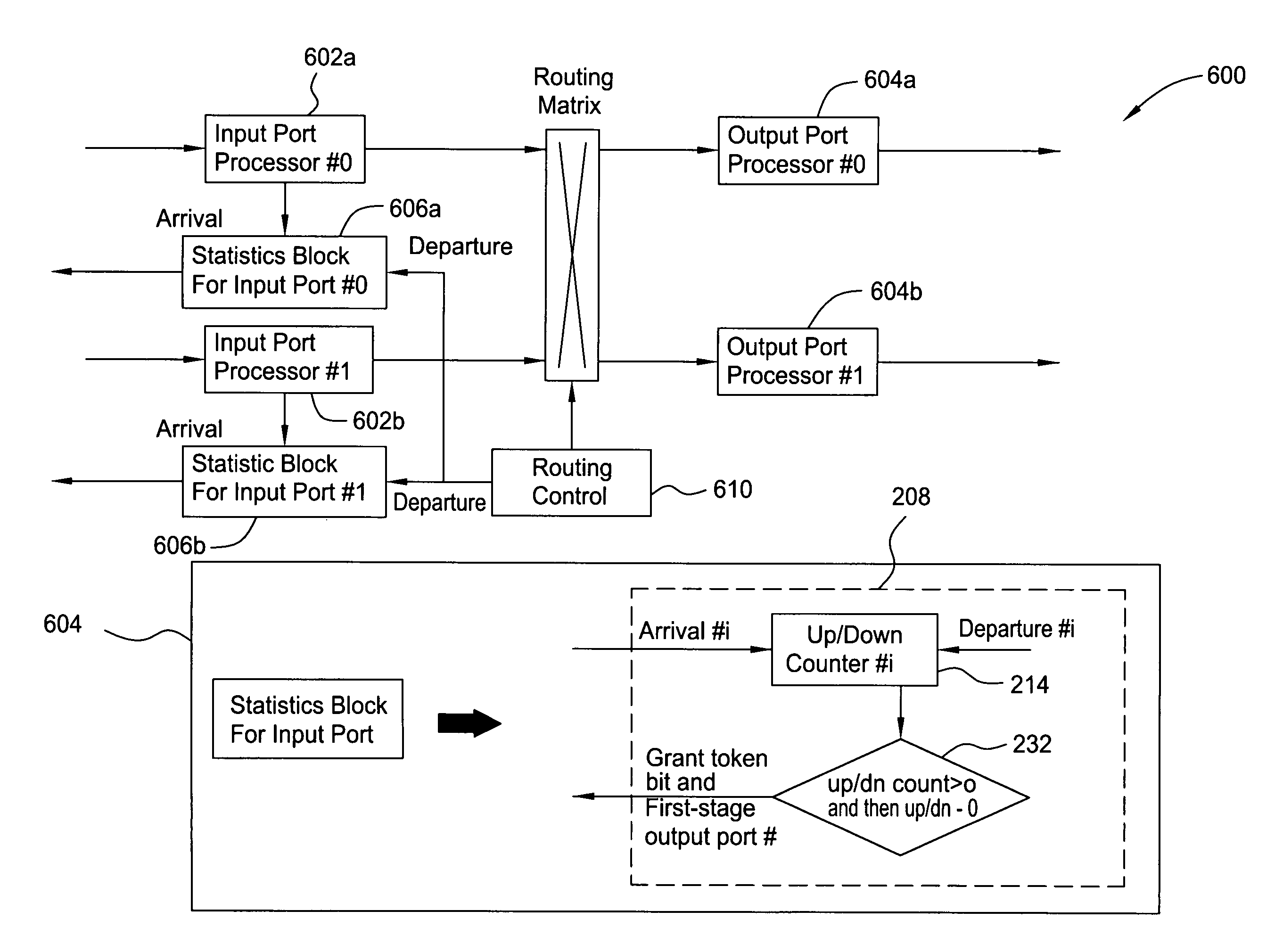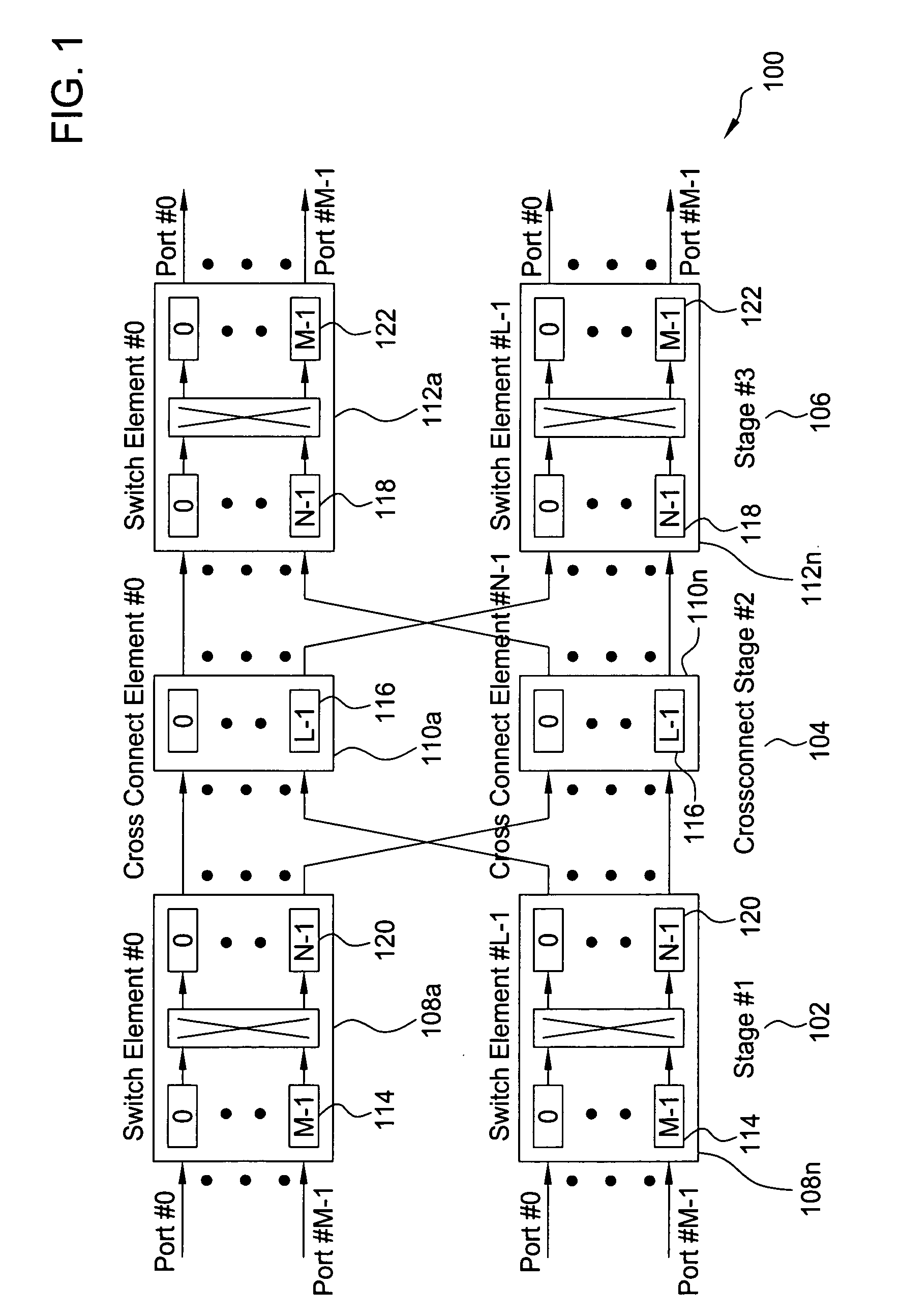Credit-based adaptive flow control for multi-stage multi-dimensional switching architecture
a multi-dimensional switch and adaptive flow control technology, applied in the field of switch architecture, can solve the problems of substantial switching latency, complex multi-stage routing algorithms, and exponentially more complex routing algorithms, and achieve the effect of large network meshes
- Summary
- Abstract
- Description
- Claims
- Application Information
AI Technical Summary
Benefits of technology
Problems solved by technology
Method used
Image
Examples
Embodiment Construction
[0023]FIG. 1 shows the architecture of a three-stage multi-dimensional switch fabric 100 in one embodiment of the present invention. Briefly, a switching element is a basic building block of a switch and generally includes devices for providing inputs and outputs. As generally known to those skilled in the art of network switches, a switching fabric refers to an interconnection of switching elements. As shown in FIG. 1, the switch architecture 100 of the present invention includes at least three stages. The first stage 102 includes an array of switch elements 0 to L-1 (108a, 108n). The third stage also includes an array of switch elements 0 to L-1 (112a, 112n). Each switch element 108a, 108n has M physical input ports (or queues)114 and N physical output ports 120 which route the incoming data to the next stage. Each third stage switch element 112a, 112n has N physical input ports (or queues) 118 and M physical output ports 122 which route the incoming data to an external node. Pref...
PUM
 Login to View More
Login to View More Abstract
Description
Claims
Application Information
 Login to View More
Login to View More - R&D
- Intellectual Property
- Life Sciences
- Materials
- Tech Scout
- Unparalleled Data Quality
- Higher Quality Content
- 60% Fewer Hallucinations
Browse by: Latest US Patents, China's latest patents, Technical Efficacy Thesaurus, Application Domain, Technology Topic, Popular Technical Reports.
© 2025 PatSnap. All rights reserved.Legal|Privacy policy|Modern Slavery Act Transparency Statement|Sitemap|About US| Contact US: help@patsnap.com



